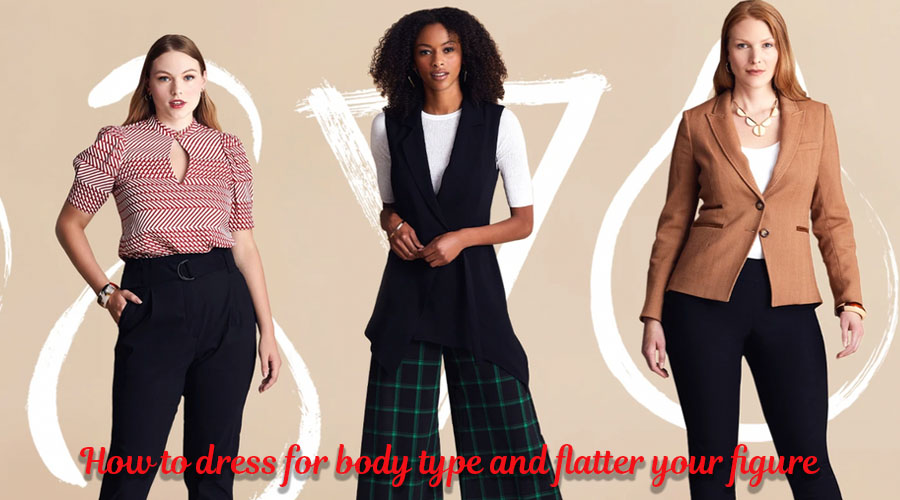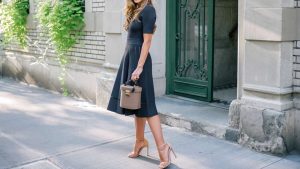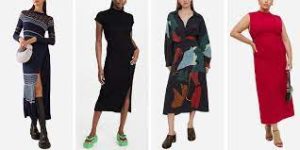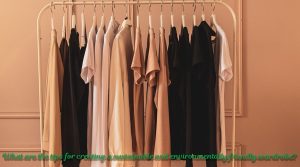
How to dress for body type and flatter your figure
How to Dress for Body Type and Flatter Your Figure?
Dressing for your body type can be a challenging task, especially if you are not aware of your body shape or the styles that flatter your figure. However, understanding your body type and how to dress for it can help you look and feel your best. In this post, we will provide tips and tricks for dressing for different body types and how to flatter your figure.

Understanding Body Types
Before we dive into the tips for dressing for different body types, it’s important to understand the different body shapes. There are four common body types: apple, pear, hourglass, and rectangle.
Apple Shape
Apple shaped bodies have a full midsection and narrow hips and shoulders. The goal for dressing an apple shape is to draw attention away from the midsection and balance the proportions of the upper and lower body.
Pear Shape
Pear shaped bodies have a narrow upper body and full hips and thighs. The goal for dressing a pear shape is to balance the proportions of the upper and lower body and draw attention to the upper body.
Hourglass Shape
Hourglass shaped bodies have a balanced upper and lower body with a defined waistline. The goal for dressing an hourglass shape is to accentuate the waist and maintain the balance of the upper and lower body.
Rectangle Shape
Rectangle shaped bodies have a similar measurement for the bust, waist, and hips. The goal for dressing a rectangle shape is to create the illusion of curves and define the waistline.
To determine your body type, measure your bust, waist, and hips and compare the measurements. You can also analyze your body shape by looking in the mirror and determining which areas you would like to accentuate or detract from.
Tips for Dressing for Different Body Types
Apple Shape
For apple shaped bodies, it’s important to emphasize the upper body and draw attention away from the midsection. Here are some tips for dressing an apple shape:
- Choose tops with V-necks and scoop necks to elongate the neck and draw attention upward.
- Opt for A-line skirts to balance the proportions of the upper and lower body.
- Wear fitted tops and avoid baggy or shapeless clothing that add bulk to the midsection.
Pear Shape
Pear shaped bodies are characterized by a smaller upper body and a wider lower body. The goal is to balance out the lower body and create a more proportional look. Here are some tips for dressing a pear shaped body:
Balance the lower body
Wear tops that are flowy and create volume on the upper body. A-line skirts and flared pants can also help balance out the lower body. Avoid clothing that is too tight on the hips and thighs, as this can accentuate the wider part of the body.
High-waisted bottoms
High-waisted bottoms such as skirts, pants, and shorts can help elongate the legs and create a more proportionate look. When choosing high-waisted bottoms, make sure the waistband sits comfortably on the natural waistline.
Off-the-shoulder tops
Off-the-shoulder tops are a great way to create volume on the upper body and draw attention to the neck and face. They are also great for showing off beautiful necklaces and earrings. When wearing an off-the-shoulder top, make sure the top fits well and is not too tight on the arms or bust.
C. Hourglass Shape
Hourglass shaped bodies are characterized by a well-defined waist and balanced upper and lower body. The goal is to accentuate the waist and create a flattering silhouette. Here are some tips for dressing an hourglass shaped body:
Accentuate the waist
Wear clothing that emphasizes the waist, such as wrap dresses and belts. A wrap dress is a classic choice for an hourglass shaped body, as it cinches at the waist and creates a flattering hourglass silhouette. Belts are also great for accentuating the waist, whether worn over a dress, blouse, or tunic.
Wrap dresses and belts
Wrap dresses are a great choice for hourglass shaped bodies, as they cinch at the waist and create a flattering hourglass silhouette. Belts can also be used to accentuate the waist and create a more defined silhouette. When choosing a wrap dress or belt, make sure the fit is comfortable and not too tight around the waist.
Form-fitting clothes
Form-fitting clothes such as pencil skirts, body-con dresses, and skinny pants can also be worn by hourglass shaped bodies. When wearing form-fitting clothes, make sure the fit is comfortable and not too tight in any one area. Choose clothing with stretch or opt for a looser fit in areas where the body is more curvy.
Rectangle Shape
Rectangle shaped bodies are characterized by a straight, athletic build with little definition at the waist. The goal is to create the illusion of curves and add shape to the body. Here are some tips for dressing a rectangle shaped body:
Create the Illusion of Curves
If you have a rectangle shaped body, you may want to create the illusion of curves. You can do this by wearing clothes that cinch in at the waist, or add volume to the hips and chest. Some clothing items that can help you achieve this include A-line skirts, ruched dresses, and peplum tops. By creating the illusion of curves, you can give your body a more defined shape and flatter your figure.
Belted Tops and Dresses
Belted tops and dresses can help create the illusion of a waist and add definition to a rectangle shaped body. When wearing a belted dress, make sure to choose one that is form-fitting and cinches in at the waist. For belted tops, choose ones that have a flattering neckline and sleeves that fit well. A belt in a contrasting color can draw attention to the waist and help create the illusion of curves.
High-Waisted Pants
High-waisted pants are another great option for a rectangle shaped body. They help create the illusion of a waist and add volume to the hips, which can balance out the proportions of your figure. Choose pants with a wide leg or a flare to add volume to the hips and create the illusion of curves. Pairing high-waisted pants with a form-fitting top can also help create the illusion of an hourglass shape.
With these tips, you can dress for your rectangle shaped body and flatter your figure. Remember to choose clothing items that fit well and make you feel confident. Experiment with different styles and try out new trends to find what works best for you.

Choosing the Right Fabrics and Patterns
Consideration of Texture
The texture of the fabric you choose can greatly affect the overall look of an outfit. For example, smooth, silky fabrics can create a sleek and sophisticated look, while textured fabrics like tweed or corduroy can add dimension and interest to an outfit. Consider the texture of the fabric when choosing clothes to flatter your figure, and select fabrics that complement your body type and enhance your best features.
Understanding Pattern Scale
The scale of the pattern is another important factor to consider when choosing fabrics and patterns. Large, bold patterns can overwhelm a petite figure, while small, intricate patterns may get lost on a larger body. Consider the scale of the pattern in relation to your body type, and choose patterns that flatter and balance your proportions.
Avoiding Fabrics That Add Bulk
Finally, it is important to consider the weight and drape of the fabric when choosing clothes to flatter your figure. Heavy, bulky fabrics can add extra weight and volume to your figure, while lightweight, flowing fabrics can create a more streamlined look. Avoid fabrics that add bulk, and choose fabrics that hug your curves and drape beautifully for a flattering and polished appearance.
By following these tips on choosing the right fabrics and patterns, you can ensure that your clothes are working for you and not against you. Experiment with different textures, patterns, and weights to find what works best for your body type and personal style.
Conclusion
Recap of Tips for Dressing for Your Body Type
To recap, dressing for your body type is all about accentuating your best features and creating balance in your proportions. Whether you have an apple, hourglass, pear, or rectangle shape, there are specific tips and styles that can help you flatter your figure and look your best. Some key tips include:
- Choosing the right fit, including avoiding clothes that are too tight or too loose
- Balancing proportions, such as drawing attention to your waist if you have an apple shape
- Choosing the right fabrics and patterns, such as avoiding bulk and selecting patterns that flatter your proportions
Final Thoughts
It is important to remember that everyone is unique and has different body types, proportions, and styles. The most important thing is to find what works for you and to feel confident and comfortable in your own skin. Don’t be afraid to experiment with different styles and find what makes you feel confident and beautiful.
Encouragement to Embrace Your Unique Figure
At the end of the day, the most important thing is to embrace your unique figure and celebrate your body for all its beauty and strength. By dressing for your body type, you can enhance your best features and feel confident and beautiful in your own skin. So don’t be afraid to experiment and find what works best for you. Embrace your unique figure and love the skin you’re in.
We hope this guide has been helpful in showing you how to dress for your body type and flatter your figure. With these tips and tricks, you can feel confident and beautiful in any outfit and rock your personal style with ease.








